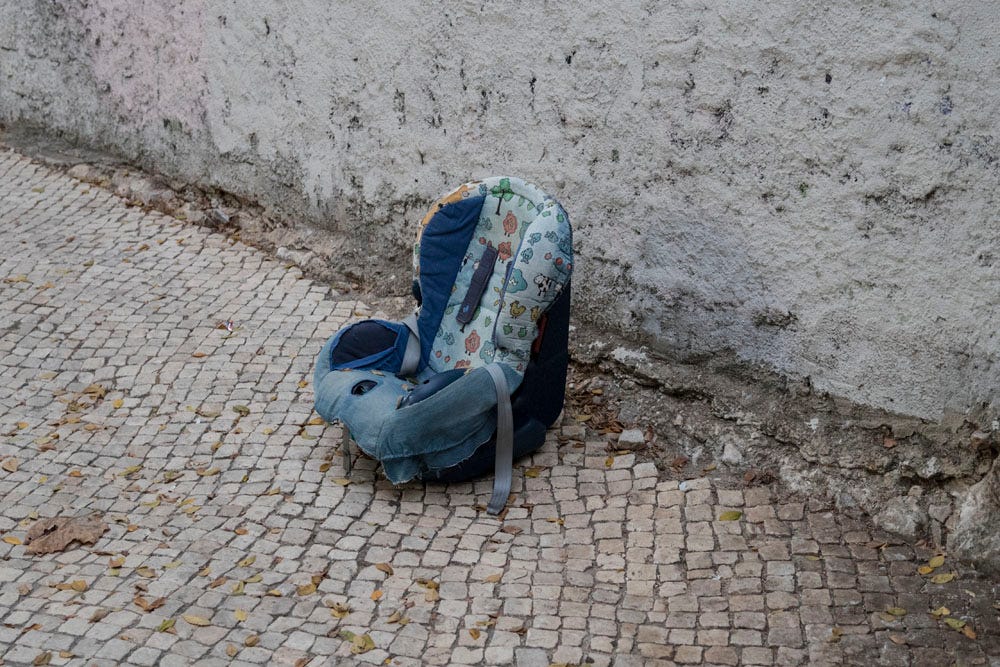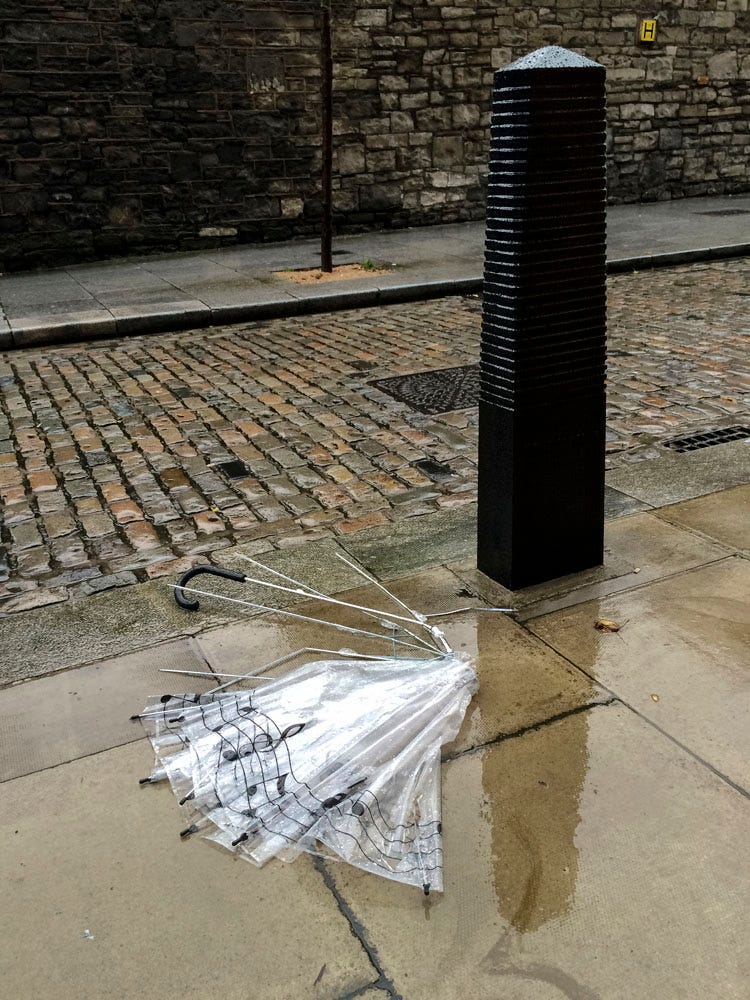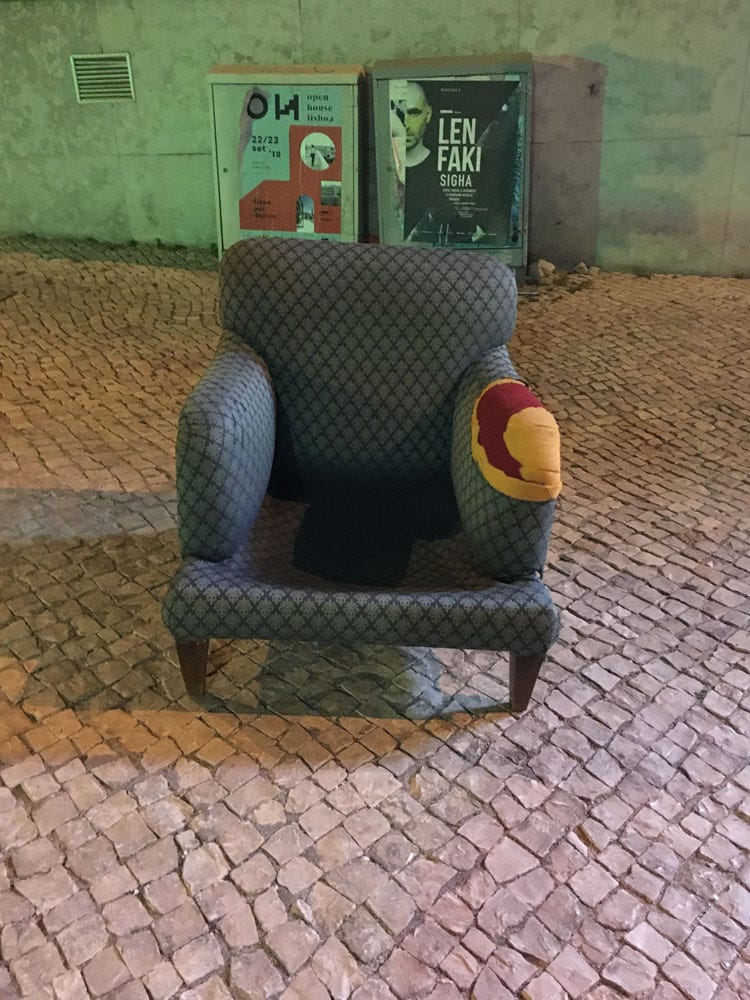Today I want to present another collaboration which is with Victor, the guy who introduce me to Substack. Again, we kept a simple format: Victor provided the text and myself provided the photos. Reminder: I’m open to further collaboration, just get in touch by dropping me an email.
For as long as I can remember, on my walks I've been drawn by the small objects discarded on the street. It always seemed to me like a parallel world to that of people walking down the street. As a child I tried to talk about them, but I quickly noticed that nobody was interested in the small objects I found or saw, so I stopped insisting on trying to tell their stories.
Later, as an adult, I didn't tell anyone about the small objects I saw out of prudence. People are very quick to label you if you exhibit a behavior they might find odd.
Until one day, a close friend told me about a difficult period in his life when he was homeless. One of the things he often did back in the day was to collect coins from the ground. Seeing my skepticism that there might be not too many coins lying around, he proposed we test it out. We walked around in a few places he selected—a parking lot, a subway exit—and in two hours or so we both collected enough coins for a cheap pint. He, obviously, was more skilled than I was. I saw mostly useless objects. His attention was tuned only on coins.
Those coins, like any other small object abandoned on the street, were there for anyone, hidden in plain sight but not everyone could see them. My friend found and collected them with the ease and professionalism of a mushroom picker. We are all descendants of endless generations of gatherers. Foraging, searching for and finding small things is in our DNA after all.
Later, when the Universe decided I should become a psychologist, I allowed myself the luxury not only to talk to others about the small abandoned objects but also to encourage my patients to bring me small objects they found on the street on their way to see me, and then we would talk about it.
The small abandoned objects on the street always tell a story, but rarely that story is about them, the objects themselves. Most often, the story is about ourselves, the viewers, the gatherers, the ones who see them, find them, perceptually and cognitively detach them from the noisy environment, and eventually bend down to pick them up to see them better. And of course we collect a few.
The story is always about ourselves because we never see an object by chance. We don't see what's around us, but what we're looking for, what we're ready to see. The object we find is about us, the viewers.
I asked my patients when they came to me with an object, a nut, a paper clip, a pen, to talk to me about that particular object. It was a simple improvised projective test that worked flawlessly every time. When they talked about the found object, they always talked about themselves. They found those small objects searching for solutions to their problems, hence the connection.
And even later, when I started flirting with the idea of photography, I realized I would have liked it if there was a photographic style dedicated to small abandoned objects on the street.
It's not exactly street photography because it doesn't include a human element. It's not macrophotography either because it's not always about very small objects. It could be a shoe, a book or an umbrella. It's not urban decay because it's neither about decay and in any case not about a place. I would add it’s even not about the object itself, but about the viewer, the photographer.
I don't know if such a photographic style exists, and if it did, it would probably be one of the difficult and useless ones.
What would I look for in such a photograph? The composition? The story of the object? The personal story of the photographer? My own story?











Loved this post!
I always pick up coins from the ground. Given how much Romanian money is worth, you need A LOT of coins to by a pint -- even a cheap one. Nevertheless, I feel like these are shards of luck that are not meant to be wasted.
And I like checking the year on them and wonder about where they've been, what places they've seen, who owned them and exchanged them... So much history and experiences in tiny bits of scrap metal!
Great! I love found objects and the stories they tell.